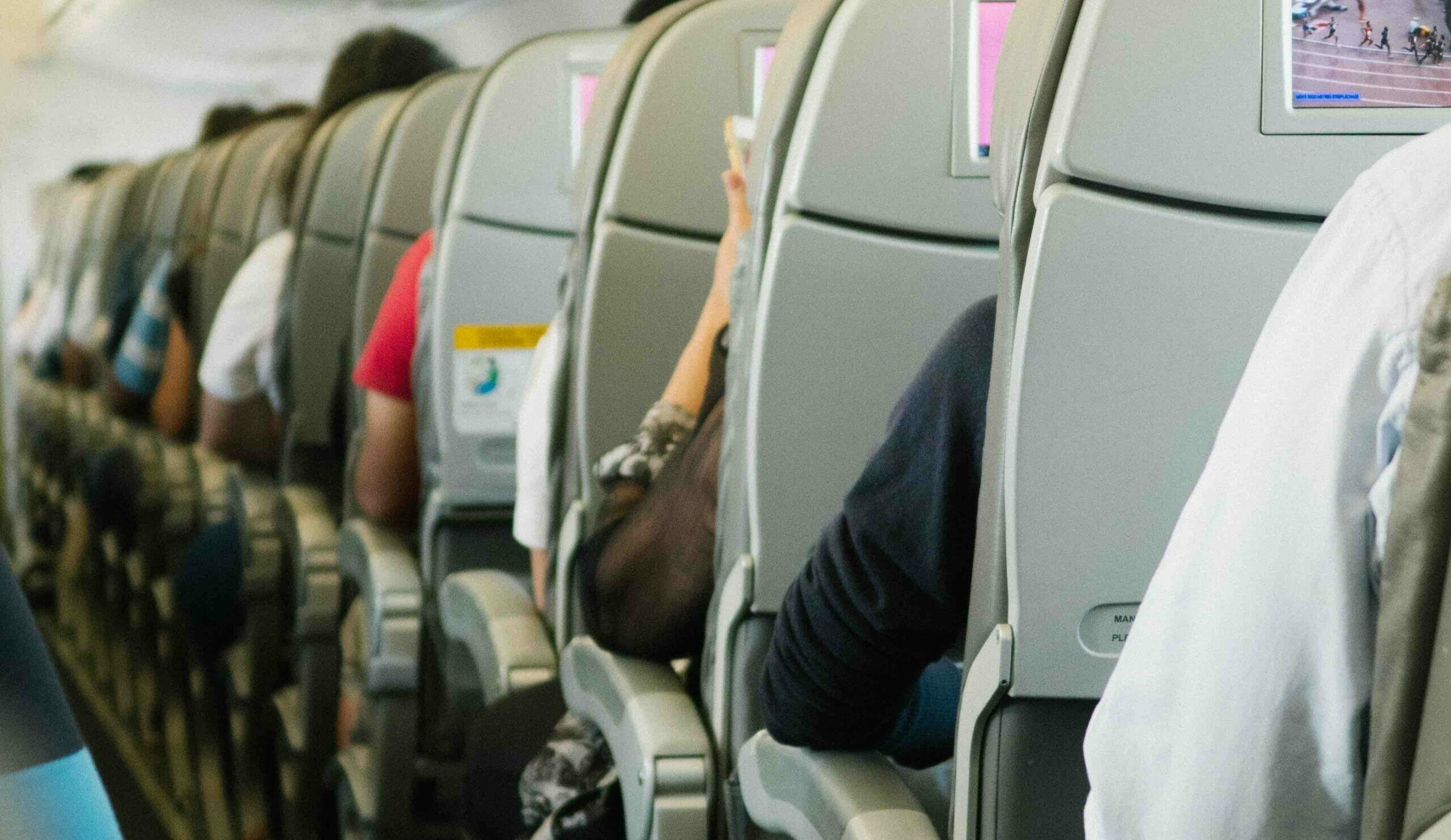In most cases, passengers can use wireless Bluetooth headphones during their flights. However, there may be specific restrictions for take-off, landing, and turbulent situations. Different airlines may have slightly varied rules. Follow the airline’s guidelines and turn off the headphones during the mandatory safety briefing.
In this article, we’ll discuss using wireless headphones on a plane and the best features to look for in a pair of headphones for flying.
Overview of Key Actions During Different Flight Phases in Most Airlines
| Flight Phase | Use of Wireless Headphones |
|---|---|
| Security check | Not Allowed |
| Take-off | Not Allowed |
| In-Flight | Allowed |
| Landing | Not Allowed |
Airline Policies and Regulations
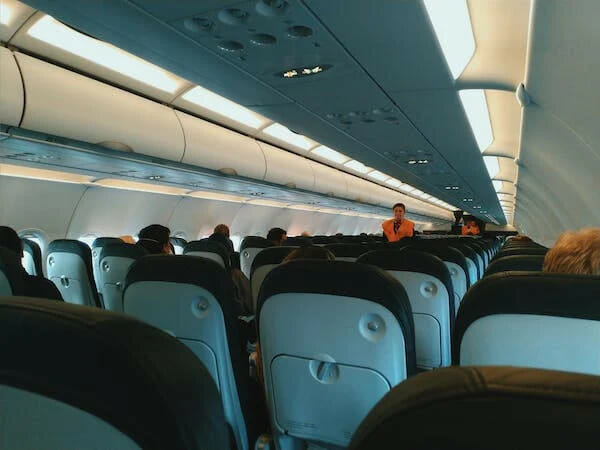
FAA Guidelines
According to the Federal Aviation Administration (FAA), passengers can use wireless headphones during their flight. However, they require compliance with airline-specific policies and Portable Electronic Device (PED) rules.
These rules dictate when electronic devices need to be in airplane mode. Typically, it’s during takeoff and landing.
Airline-specific Policies
Different airlines have policies regarding using wireless headphones on their flights. Let’s take a closer look at some popular carriers:
- United Airlines: They allow passengers to use Bluetooth headphones but must comply with the FAA PED rules.
- American Airlines: Similar to United, they allow wireless headphones while observing the FAA guidelines.
- JetBlue: Passengers can use wireless headphones during flights but turn off cellular service and Bluetooth during landing or takeoff.
- Delta: Like JetBlue, Delta allows passengers to use wireless accessories, including headphones, as long as cellular service is deactivated.
- Southwest: Bluetooth headphones are allowed during the flight, but follow the FAA rules regarding PED usage.
- British Airways: Wireless headphones can be used on board, adhering to PED regulations.
- Emirates: Bluetooth headphones usage is allowed during the flight, but ensure compliance with PED guidelines.
- Lufthansa: Passengers can use Bluetooth headphones during all stages of the flight, including take-off and landing.
- Air Canada: On flights with WiFi, they allow Bluetooth headphones usage. However, on flights without WiFi, they’re not permitted.
- Alaska Air: Wireless headphones are allowed, but PED rules must be followed.
It’s essential to remember that these policies might change, so always double-check the latest airline regulations before your flight. Following the TSA guidelines and adhering to specific airline policies can ensure a smooth and enjoyable flying experience with your wireless headphones.
TSA Regulations
Transportation Security Administration (TSA) in the United States also does not specifically prohibit wireless headphones on an airplane. However, as mentioned, airlines may have rules and guidelines for using electronic devices on their flights, including wireless headphones.
Here’s a general idea of what to expect, but be sure to check with your specific airline for their most up-to-date rules:
- Security Screening: When going through TSA security screening, electronic devices larger than a cell phone typically need to be removed from carry-on bags and placed in a bin separately for x-ray screening. Small electronics, like wireless headphones, can generally stay in your bag.
- In-flight: Once on the plane, electronic devices are usually restricted during takeoff and landing for safety reasons. You’re typically asked to turn off your devices or put them in airplane mode during these times.
- During the Flight: After the plane has reached cruising altitude, passengers are usually allowed to use their electronic devices, including wireless headphones, unless otherwise instructed by the flight crew. Ensure your device is switched to airplane mode to avoid interfering with the aircraft’s navigational and communication systems.
Again, always check the specific regulations of the airline you are flying with, as they may have different rules or guidelines.
Airlines that Allow the Use of Headphones During Takeoff and Landing
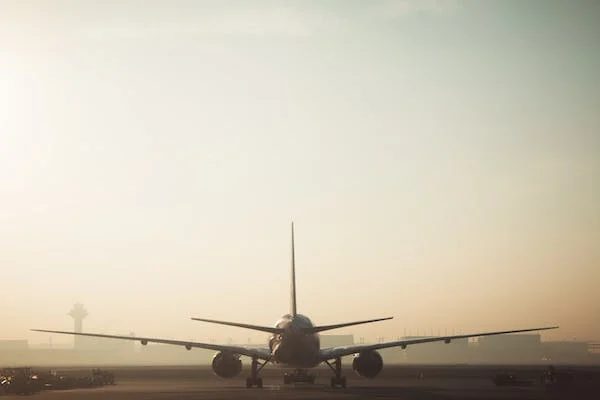
Lufthansa provides an exemplary service by allowing passengers to use their wireless headphones during the entire flight, including takeoff and landing. As a result, your listening experience remains uninterrupted.
On the other hand, airlines like Allegiant, American Airlines, and Delta ask their passengers to remove wireless headphones during takeoff and landing. But worry not; you can still use them while being in the air, cruising at your assigned altitude.
Here’s a quick summary of airlines that allow wireless headphone usage during takeoff and landing:
- Lufthansa: Permitted throughout the flight
- Qatar Airways: Allowed in every stage of the flight
- Southwest Airlines: No restrictions
- Spirit Airlines: Can be used during takeoff and landing
- Wizz Air: Bluetooth devices allowed during all stages of the flight
So, next time when you book a flight with one of these airlines, rest assured, knowing that your audio experience won’t be disturbed during the most exciting parts of your journey! Again, always make sure to double-check the specific regulations during your flight.
Using Wireless Headphones on a Plane
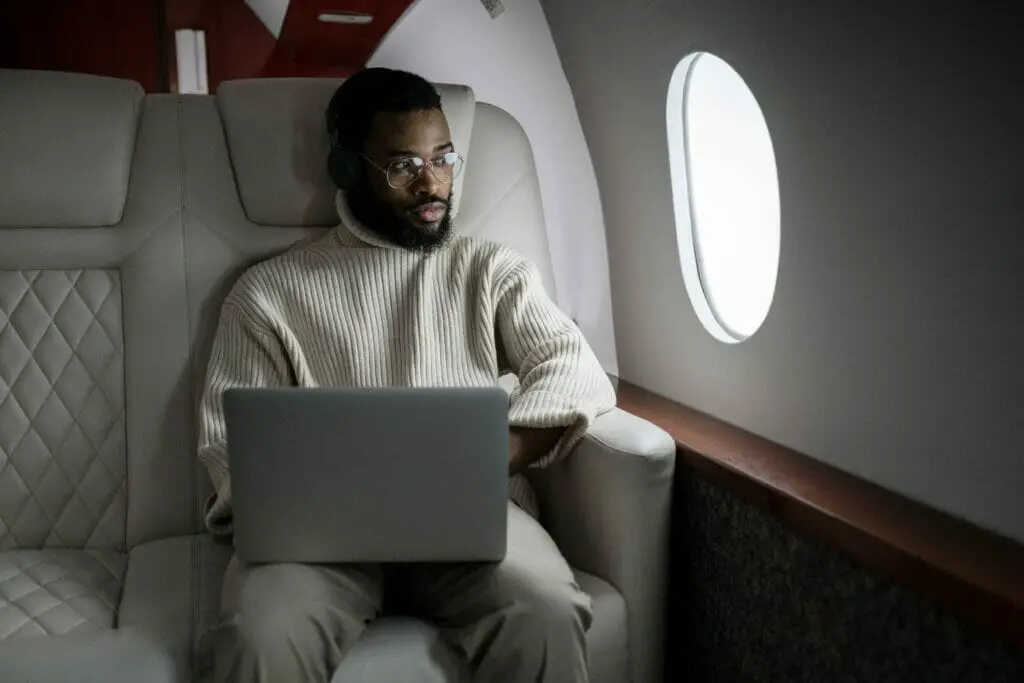
In-Flight Entertainment
When I fly, I often find that one of the main benefits of using wireless headphones is the ability to connect them to the plane’s entertainment system. Many airlines now support Bluetooth connections, allowing you to link your Bluetooth headphones to onboard entertainment options easily.
However, if the airline you’re flying with doesn’t support Bluetooth, I recommend bringing a wireless transmitter to plug into the plane’s headphone jack. This gadget will let you enjoy in-flight entertainment using your wireless AirPods or Bluetooth headphones.
The first time I tried connecting my Bluetooth headphones to the plane’s entertainment system, it seemed almost impossible. But then, I learned about the Twelve South Airfly Wireless Transmitter, which easily pairs my wireless headphones with the in-flight entertainment system.
Now, I can effortlessly watch movies and listen to music in the air.
Airplane Mode
You might wonder whether your wireless headphones or AirPods can function in airplane mode.
The good news is that modern smartphones often allow Bluetooth connections even while in airplane mode.
- Simply activate airplane mode first.
- Then enable Bluetooth to connect your headphones.
It’s worth remembering that each airline has its own rules and regulations. Always check with your airline to ensure they allow using Bluetooth headphones on their flights.
Travel Tips for Wireless Headphone Users
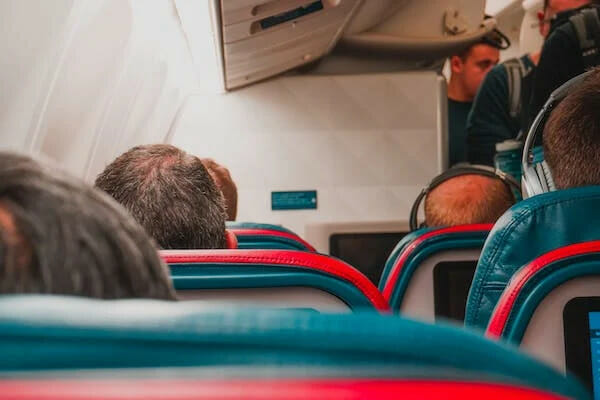
Best Features to Look for in Wireless Headphones for Flying
| Feature | Importance or Benefits |
|---|---|
| Noise Cancelling | Blocks out ambient noise from engines, air conditioning, and passengers. |
| Long Battery Life | Ensures headphones last through long-haul flights. Carry a portable charger as a backup. |
| Bluetooth Connectivity | Allows connection to devices and in-flight entertainment systems. |
| Comfort | For extended use, headphones should be comfortable to wear. |
As a frequent traveler, I have gathered useful insights into using wireless headphones on planes. I’ll share these tips in this section, covering aspects like connecting to in-flight entertainment, battery life and charging, and noise-canceling features.
Battery Life and Charging
One thing to consider when using wireless headphones on a plane is their battery life. You’ll want headphones that can last for the duration of your flight, especially long ones.
For example, the Bose QuietComfort 45 and Apple AirPods Max both offer impressive battery life, ensuring you have enough power to last through long flights.
Additionally, don’t forget to bring a portable charger or a charging cable compatible with the airplane’s USB ports, just in case you need to recharge during your journey.
Noise-Canceling Features
Noise-canceling features in wireless headphones are a lifesaver on flights, as they help block out unwanted noise from the airplane’s engines and other passengers. I personally love my AirPods Pro for this reason, as they provide effective noise-canceling capabilities packed into a compact design.
Other popular noise-canceling headphones for your next flight include the Bose QuietComfort 45 and Apple AirPods Max.
I learned that noise-canceling headphones are a must-have accessory, especially on planes. They block out ambient noise from engines, air conditioning, and even chatty neighbors. I can assure you that quality noise-canceling headphones will make your in-flight experience a lot more enjoyable.
So, when planning your next trip, pack your wireless headphones and remember these tips to enhance your in-flight entertainment experience.
Why Can’t You Use Wireless Headphones on Takeoff
The restriction on wireless headphones, or any electronic devices, during takeoff and landing, concerns potential interference with the aircraft’s navigation and communication systems.
Wireless devices, including headphones, emit radio signals that could theoretically interfere with aircraft systems. Although the chances of interference with modern aircraft and consumer electronics are extremely low, airlines and aviation authorities have generally taken a conservative approach, erring caution.
In addition to the concern about electronic interference, safety’s another reason. During takeoff and landing – the most critical phases of any flight – it’s important for passengers to be able to hear and quickly respond to instructions from the flight crew. You might not hear these instructions if you wear headphones, especially noise-canceling ones.
However, rules can vary. Some airlines allow electronic devices during all phases of flight, provided they’re set to airplane mode. The best practice is always to follow the crew’s instructions and the airline’s policies.
References
Organizations:
- Federal Aviation Administration (FAA). https://www.faa.gov/
- Transportation Security Administration (TSA). https://www.tsa.gov/

